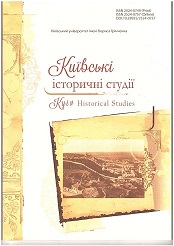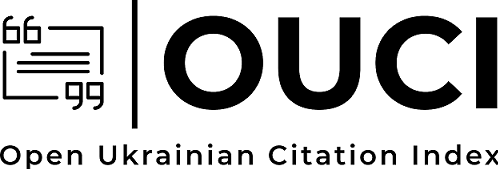MYKHAILO HRUSHEVSKYI ON PRECONDITIONS, REASONS AND DRIVING FORCES OF “KHMELNYCHCHYNA”
DOI:
https://doi.org/10.28925/2524-0757.2016.2.1Keywords:
Mykhailo Hrushevskyi, preconditions, reasons and driving forces war, sourcesAbstract
In the study of the early modern history of Ukraine it is primarily analyzed the achievements of the authors of positivistic direction, which coincided chronologically with the development of national science. However, with the introduction of new methods of historical search, characteristics of works of the fi rst phase of scientific studies often turn into criticism. It is quite natural that along with development of scientific knowledge the evaluation of various events and phenomena is transformed, submitted in the form according to the level of methodological tools. However, the application of innovations does not always lead to new approaches towards of understanding the past. A striking example is the analysis of preconditions, reasons and driving forces behind the rebellion in 1648, highlighted in the work of Mikhailo Hrushevskiy “Istoriia Ukrainy-Rusy (History of Ukraine-Rus)”, volume 8. The scientist considers the growing role of the nobility, who managed to block the initiatives of the Polish-Lithuanian Commonwealth king Vladislav IV, implementation of “Ordination of Zaporozhskyi Army” in 1638, colonization movement of Ukrainian population to the Left Bank and confessional
factors as main prerequisites. The reasons of the nationwide uprising in Ukraine in 1648, which M.
Hrushevskyi called “Khmelnychchyna”, he fi nds out on the basis such sources as “Eyewitness Chronicle (Litopys Samovydtsia)”, the works by Hryhoriy Hrabianka and Samiylo Velychko, on the opposite camp — statements of Polish nobleman Jan Kushevych, writers Vespasian Kohovskyi, Samuil Grondsky and Nathan Hannover. The main reasons are defined as social ethnic and religious issues. The scientist drew attention to the formation of a broad opposition of noble-magnate regime in Ukraine. Besides Cossacks, it included peasants, tradesmen, petty nobles, Orthodox clergy. Detailed analysis made by M.Hrushevskyi regarding preconditions, reasons and driving forces of “Khmelnychchyna” gives the ground to define its purpose and character, which contravene with existing historiographical definitions: “civil war”, “peasant war”, “Cossack war”, “Cossack revolution”, “national revolution” etc. It seems more appropriate to use the term “liberation war” as it covers all the aspects of ethnos struggle against social and national oppression.
Downloads
References
Hrushevskyi M. Istoriia Ukrainy-Rusy / Hrushevskyi M. — K. : Naukova dumka, 1995. — T. 8. — 620 s.
Krypiakevych I.P. Bohdan Khmelnytskyi / I.P. Krypiakevych. — Lviv: Svit, 1990. — 406 s.
Lypynskyi V. Stanislav Mykhailo Krychevskyi / V. Lypynskyi // Tvory. — T. 2. Uchast shliakhty u velykomu ukrainskomu povstanni pid provodom hetmana Bohdana Khmelnytskoho. — Filadelfi ia, 1980. — 638 s.
Petrovskyi M.N. Vyzvolna viina ukrayinskoho narodu proty hnitu shliakhetskoi Polshchi i pryiednannia Ukrainy do Rosii (1648–1654) / M.N. Petrovskyi. — K., 1940. — 288 s.
Smoliy V. Ukrayinska natsionalna revoliutsiia 1648–1676 rr. / V. Smoliy, V. Stepankov. — K. : Vyd. dim «Kyievo-Mohylianska akademiia», 2009. — 447 s.
Published
How to Cite
Issue
Section
License
Copyright (c) 2016 Kyiv Historical Studies

This work is licensed under a Creative Commons Attribution-NonCommercial-ShareAlike 4.0 International License.
Authors who publish in this journal retain the right of authorship of the work and give to the journal right of first publication of this work under the conditions of Creative Commons: Attribution-NonCommercial-ShareAlike 4.0 International (CC BY-NC-SA 4.0), which allows others freely distribute the work published with reference to the authors of the original work and the first publication of this magazine.














